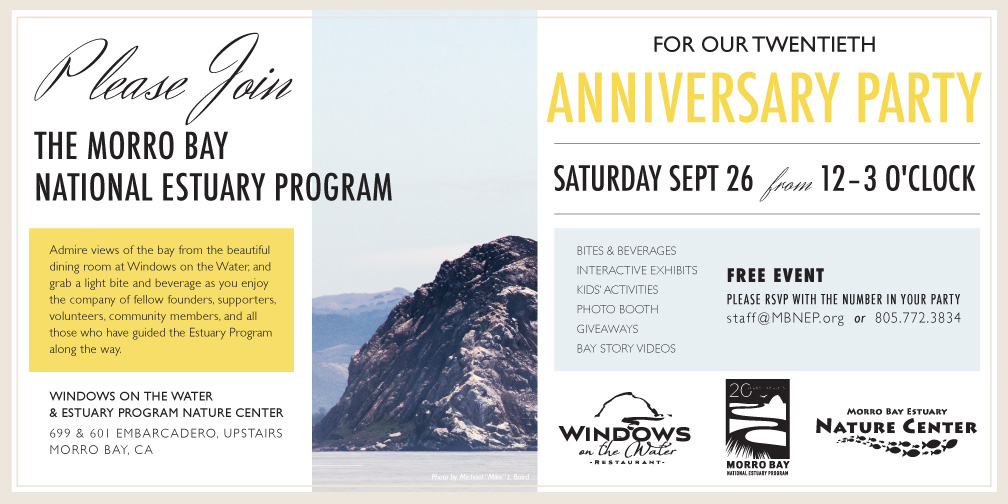It’s Sea Otter Awareness Week, which makes us remember how lucky we are to have a group of southern sea otters living in Morro Bay.
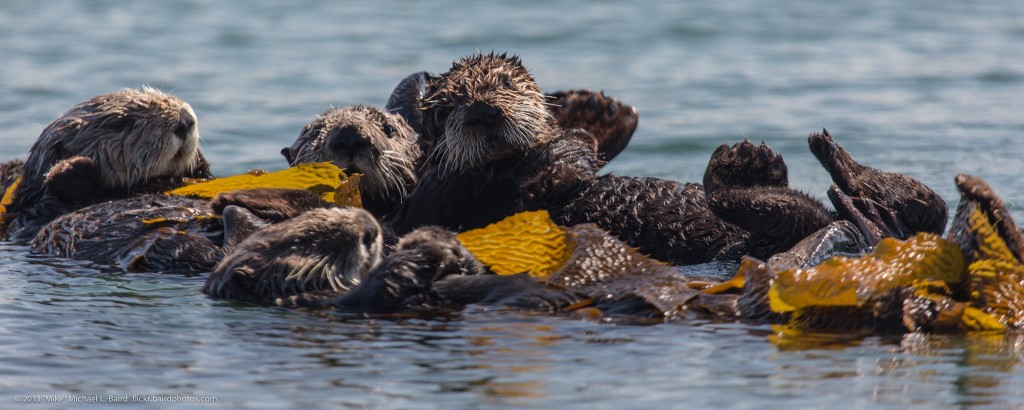
Sea otters don’t have the blubber that other marine mammals depend on to keep them warm. Instead, they have water-resistant coats that are very thick, with up to one-million hairs per square inch. Because of this, their pelts were prized by hunters and furriers in the 18th and 19th centuries, leading to a huge reduction in the worldwide otter population.
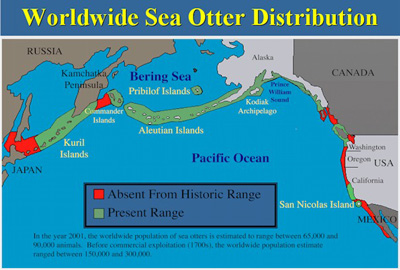
The situation along the California coast was so dire that otters were thought to be extinct here until a small group was discovered near Big Sur in the late 1930s. Today’s southern sea otters are descended from that population.
It’s important that we continue to protect sea otters. They are a keystone species, meaning that they help to keep the ecosystems in which they live balanced. In kelp forests, for example, sea otters eat sea urchins, which graze on kelp. Keeping the sea urchin population in check ensures that enough kelp grows to support a variety of other life forms. Research done in Elkhorn Slough has shown that sea otters can play a similar role in eelgrass beds by consuming crabs that live there.
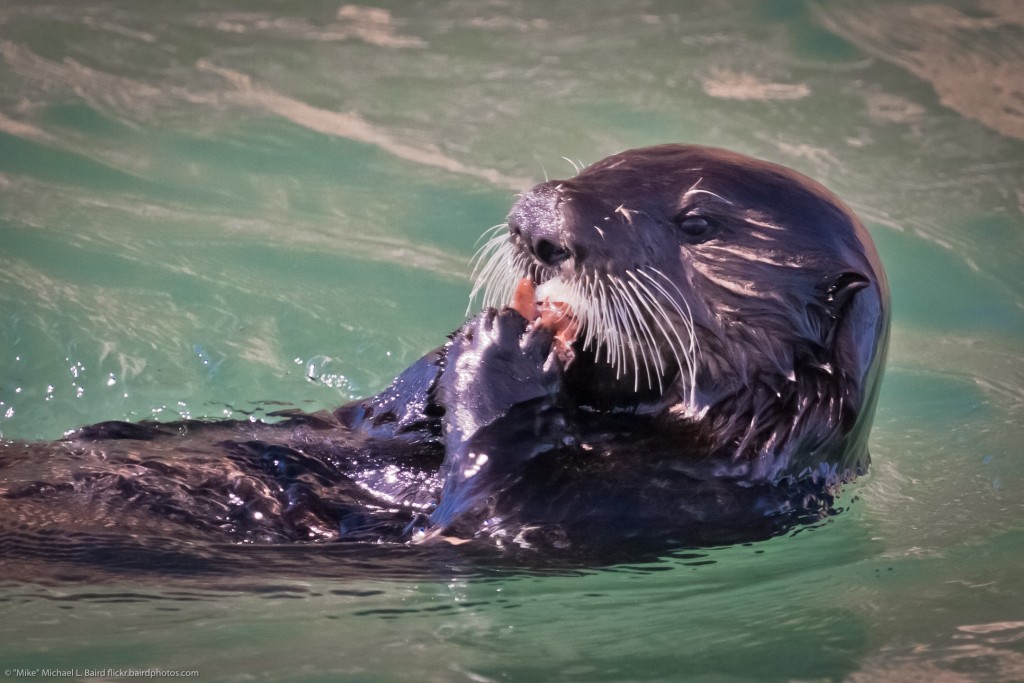
What you can do to help sea otters continue to rebound
- Watch what goes down the drain: Otters are an indicator species, meaning that they reflect the health of the ecosystems in which they live. If toxic chemicals make it into the waters they frequent, chances are those substances will affect the health of the otters. Making sure that only water goes down your storm drain and that you dispose of household chemicals properly will help keep otters, and other estuary animals, safe and healthy.
- Pick up after your pets: Toxoplasma gondii is a parasite that infects many animals, especially cats. The eggs can live for months or years in feces. Unfortunately, this parasite can be fatal for sea otters. To reduce the risk of infecting sea otters, you should always pick up after your dogs and cats (both indoors and out). Dispose of waste and litter in the trash, rather than flushing them down the toilet, as waste-water treatment processes may not kill Toxoplasma gondii.
- Report stranded or dead otters: If you see a struggling, stranded, or dead sea otter, please call the Marine Mammal Center at (415) 289-SEAL (or 7325). They will help the animal, if possible. They also work with researchers who study the causes of death and disease in sea otters in order to better understand the threats these animals face.
- Give otters their space: While it often looks like otters are lounging around, being an otter isn’t necessarily easy. Much of sea otters’ playful-looking behavior is actually serious grooming. They somersault, roll, rub their fur, and lick themselves clean to stay buoyant and warm. In order to produce enough energy to keep going in cold water, they need to eat a lot—about 25% of their body weight each day. (That would equate to an adult human eating an average 30 to 50 pounds of food a day!) This means a lot of hunting. Otters also need a lot of rest; they sleep for about half of the day.
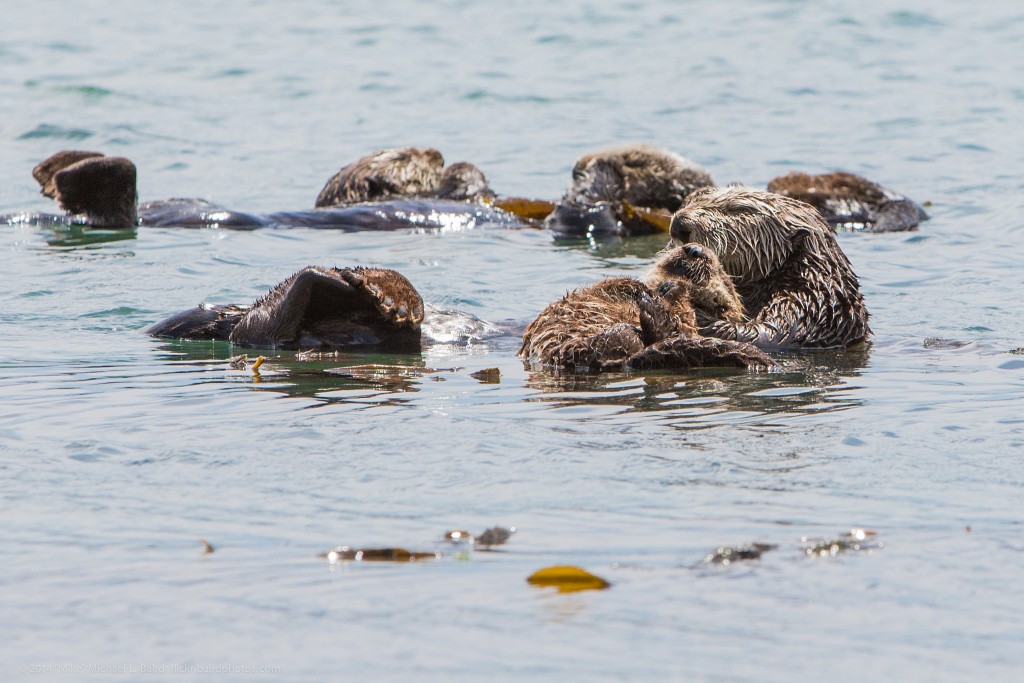
In order to let otters get on with these essential activities, they need to be left alone. In general, regulations require people to stay at least 50 yards away from marine mammals. While it can be difficult to judge this distance, a good rule of thumb is to stay far enough away that the animal does not notice or react to your presence in any way.
This doesn’t mean that you can’t enjoy watching Morro Bay’s population of otters. You can still get a great view at this distance either from the water, or onshore. If you want a closer look, we invite you to use the binoculars at the Estuary Program’s Nature Center. Otters often swim by, diving down every so often to hunt for their next meal.
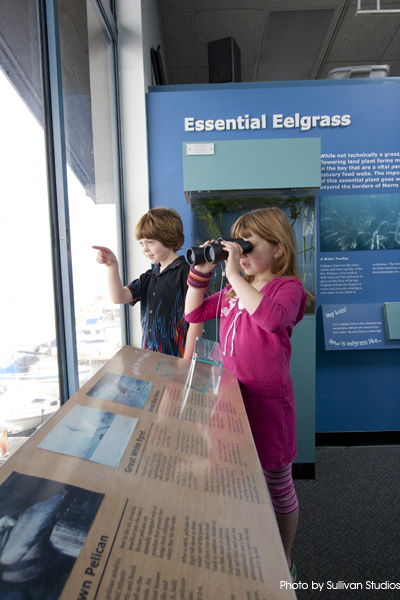
Sea Otter Awareness Week Activities
- Stop by the Estuary Program Nature Center this Saturday during our 20th Anniversary Party from 12 p.m. to 3 p.m. You can check out our sea otter display, including a replica sea otter skull. We’ll also have other fun family-friendly science activities like a microscope station, an assortment of aquatic bug samples, and a watercycle bracelet making activity.
- You can also head over to the north side of the Morro Bay harbor entrance across from the Morro Rock parking lot (near Coleman beach) at 12 p.m. State Park Docents will be there with a table of otter-related items, as well as spotting scopes and binoculars to help you see Morro Bay’s otters up close.
